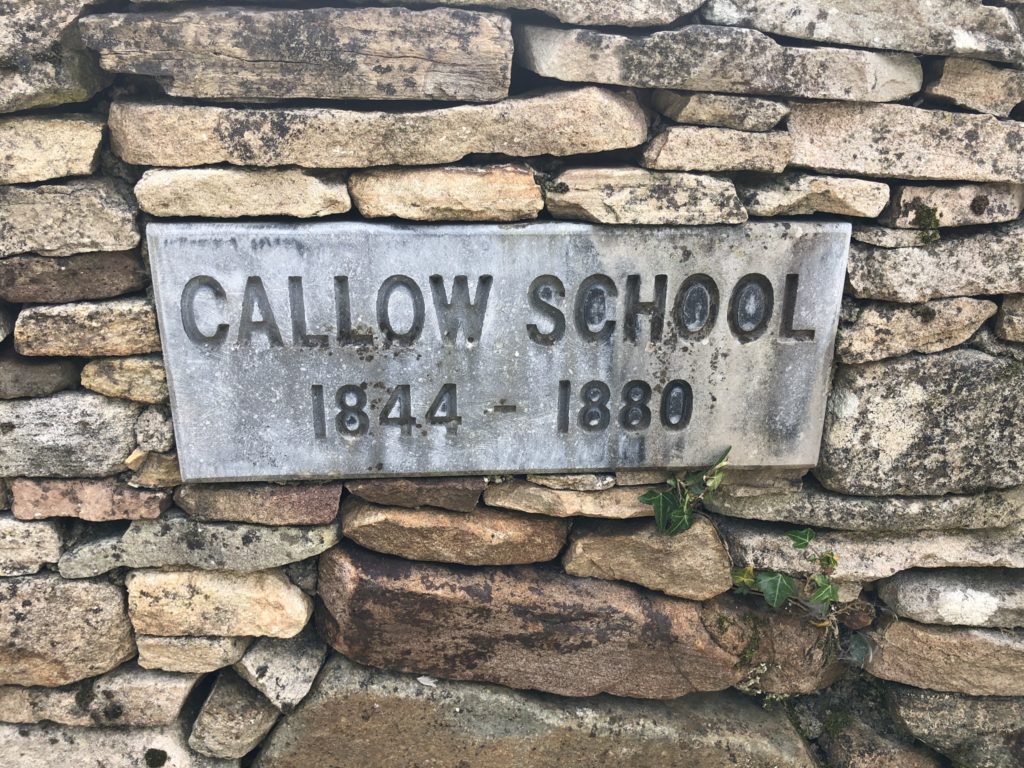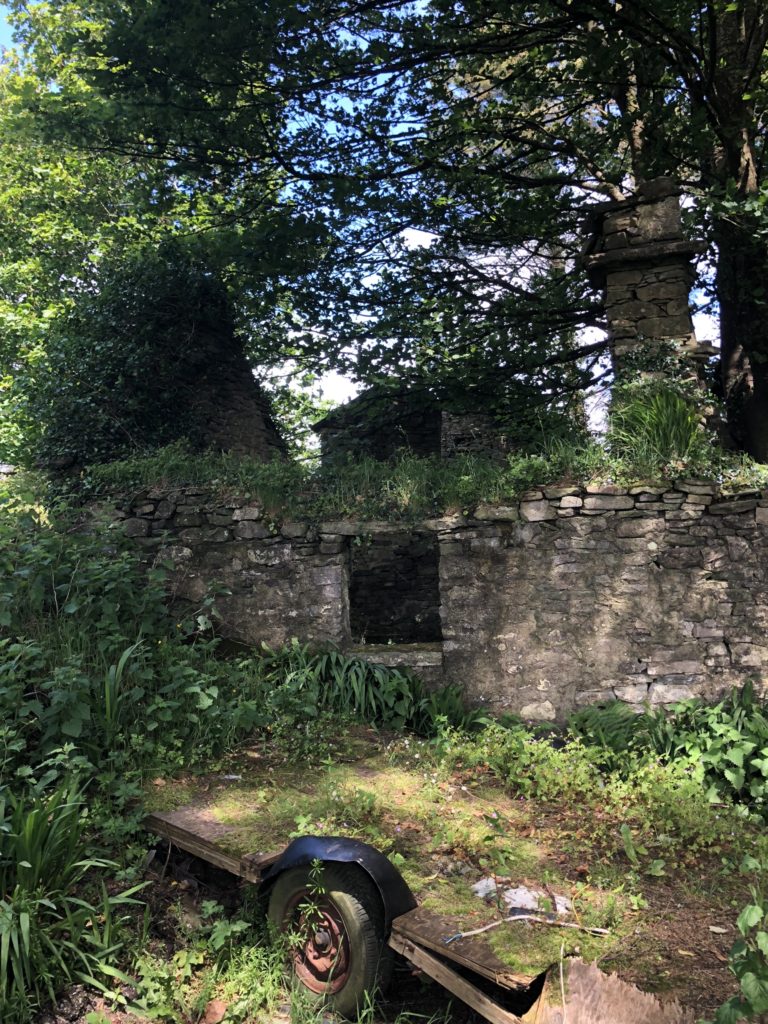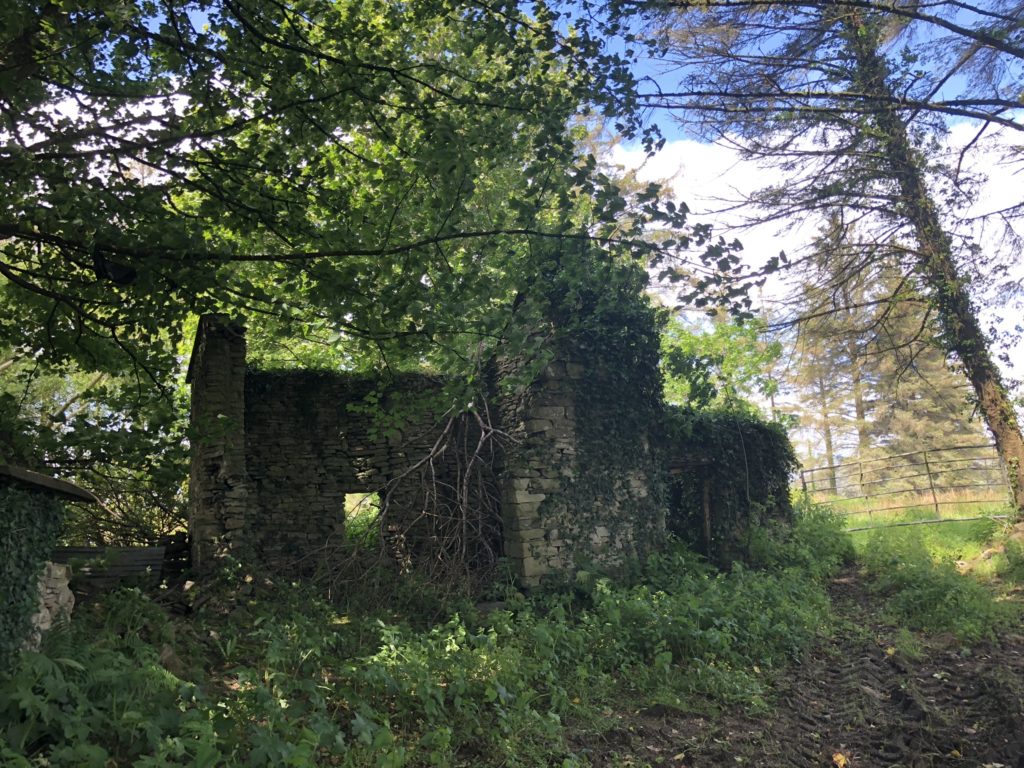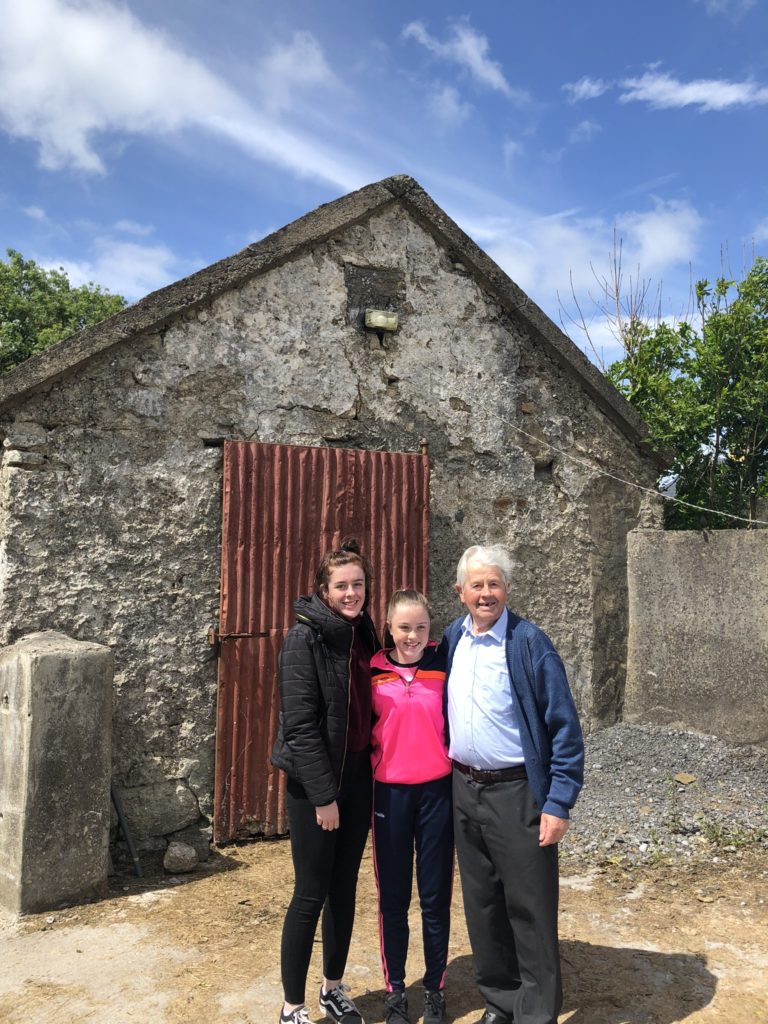****WARNING TO NON-RELATIVES: this blog post has lots of family genealogy and may be a bit boring to those outside the family…
One of the reasons that I wanted to come to Ireland was to explore some family roots. My mom’s side of the family is all Irish, and I grew up in an Irish neighborhood on the south side of Chicago, but I have never been to Ireland.
My mother’s grandparents were from Country Mayo, from Swinford and Barnacogue, not far from where Molly and I are staying at Nora’s house in Westport. Growing up, the Irish connection was always emphasized with songs and parades and soda bread bake-offs, but somehow I am surprised at how much the connection exists here in Ireland. At the pubs, I look at people and think that they look like my uncle Paul or my uncle Terry or my cousin Bill; the bar owner of Blouser’s looks like Joe Farrell. One of the musicians looked a lot like Matt McInerney. All of Nora’s cousins look like her. And the people here are very welcoming of Americans, and many seem to have relatives in the US, or to have spent a year in the US. The owner of the Hennigan Heritage Center had visited the south side of Chicago, and asked if I knew Holy Sepulchre Cemetery where his aunt was buried. And of course I have relatives buried there, so my relatives are buried next to his relatives.
Martin Loftus (died 1924 when my grandmother Catherine and Molly’s grandmother Helene were young girls) and Ellen Jordan are Molly’s and my great-grandparents. They were both from County Mayo and immigrated to the US around 1900.
My great-grandfather Martin Loftus had a first cousin, also named Martin Loftus, who came to the US in the 1930’s looking for work. There was no work to be found as the country was experiencing the Great Depression. So he went back to the family farm in Killasser. My mom and dad, Peggy and Byron, met Cousin Martin when they visited in 1977. He was living on the farm with his son Francis, daughter-in-law Breege and their children. Martin visited Chicago several times; he died in 1998. Susan Loftus visited them in 1968, and then Susan, Eileen & Lynne visited Martin, Francis, Breege & kids in 1973. Susan Loftus and John returned for their honeymoon in 1999, and then again in 2009. Breege died in 2010 at the age of 67, of breast cancer.
John Loftus (son of Francis Loftus, who is the son of Cousin Martin) met us at 10 AM at his house. We had some coffee, and he showed us some photos from a sort of school yearbook that went back to the 1870s. One of the photos was of Cousin Martin and his wife Anne, with Francis as a child, and with Cousin Martin’s father Tom, who was a fluent Irish/Gaelic speaker who hailed from the nearby town of Callow; he died in 1942, and his wife Annie died in 1924.
John told us that his grandfather, our Cousin Martin had nine siblings (not in order):
Paddy, Jim (died young), Tom, Jack, Michael (his daughter Patsy died 2017), Mary (married a man named Golden, had a son named Dr. Jack Golden in Chicago), Catherine “Sis”, Bertha (married Tom Walsh and had a son named Tom Walsh), and Terrence (died as an infant).
Martin had five children: Tommy, Kathleen, Theresa, Francis, and Philomena (born 1941, died 1998). There is a 1938 photo of the kids).
Francis Loftus married Breege and they had five kids:
- Paul (born 1964, lives in Philadelphia)
- Mary (lives in the nearby town of Castlebar, works with autistic kids)
- Frank (lives in Park Ridge near Chicago, married to Helen McCann of Park Ridge; Helen’s brother is John McCann)
- John (married to Anne (nee Fuller) from Kerry, lives in Swinford and works as a production supervisor for Baxter, has 23 year old daughter Emer (Irish Eimear) and 19 year old daughter Sarah)
- Michael (married to Assumpta, lives near family farm in Kilasser; kids are Lucy, Jack, Molly, Katie).
Jack Loftus was the brother of Cousin Martin Loftus; he had three daughters: Joan, Ellen, and Mary Kate (deceased).
- Joan married an Irishman from Doon Bay, John Julian (died 2017). They live in Oak Forest, Illinois, just south of Chicago. Their kids are Sean (born around 1968), Colleen, Pat, and Terry. Colleen is an accountant in downtown Chicago, and the boys work for Cook County.
- Ellen married a man named Jack Harrington who was born in the US, but whose roots are in Galway. Sharon Lima is the daughter of Ellen and Jack; Tricia is Sharon’s sister.
The yearbook said that Pat Loftus (Cousin Martin’s brother) started first grade in 1901. John/Jack Loftus started first grade in 1904. They are listed as being from “Derreen Doughy”. My mother had told me that cousin Martin lived on a farm called “Dromeda Duke”, but apparently “Derreen Doughy” and “Dromeda Duke” are the same place. Dromeda Duke was more of the English name, and the more Irish name is Derreen Doughy. Some of the names were changed after 1921 independence. There are two villages in Dromeda Duke; Francis’ village is Derreen.
The town of Swinford currently has about 1500 people. I told John that we were interested to see the house where Ellen Jordan was born; Bill McInerney had told us that it was near St. James National School in Barnacogue. My grandmother Catherine and her sister Helene found a cousin from the Jordan line, Kathleen Grifferty, when they went to Ireland. Helene wrote to Kathleen and sent her money for many years after she and Catherine visited with Bill in 1984. John Loftus took us to St. James National School, and then asked a neighbor about Kathleen Grifferty’s property. Kathleen and her husband died in 2015 and 2016, but they had moved to town some years prior to that. One of their sons, Pat, died from suicide some years back. Another son, Jerry Grifferty, was in school with Michael Loftus but has since moved to London.
The road to their property is overgrown and not accessible by car, but John and Molly and I hopped the fence and were able to see the house. Bill McInerney has a photo of him and Catherine and Helene and Kathleen Grifferty standing in front of the house in 1984. At that time, the house was being used as a storage place for animal feed. It had an animal corral in front of the house, but the property is totally abandoned now.
It really gave me goosebumps to see that house, and think about the poverty that my great-grandmother experienced. I felt like I was touching the past, touching history. I know there was a story that Ellen Jordan, as a four-year-old girl, was left to mind her one-year-old sibling, but the baby fell in the fire and later died. I have saved the exact location as a labeled “dropped pin” on Google Maps that I can share with anyone who might be headed over there (I think Tom McInerney and maybe Pam Loftus were planning to visit).
After visiting the house of Ellen Jordan, we hopped in the car again and drove to Callow, where Tom Loftus was from. We saw the church, built in 1812, that he would have attended, and then we drove down a narrow road to see the house that Tom grew up in. John Loftus says that he remembers his granddad, Cousin Martin, telling him that this was where his own father had grown up. It was another ruined stone cottage, a bit bigger than Ellen Jordan’s, with a granary. I have that location also saved as a dropped pin in Google Maps.
We went to the Kilasser Cemetery to see the grave of Cousin Martin, and also of John’s mother Breege, who died of breast cancer nine years ago at the age of 67. We saw the St. John’s Carramore School, where Michael Loftus’ kids go to school, and we drove past the house of Michael Loftus, with his van in the driveway advertising his guttering services.
Then we went to the farm in Kilasser and had lunch with Francis, who is 82 years old but still working on the farm with 30 head of cattle. It is not a dairy farm but rather a place to breed. He has the cows inseminated and takes care of the cows and their calves through their first year of life, and then sells them. When we were there, there was one tiny new calf that had been born recently. John said he got a call from his dad that the calf was not yet suckling well, the day after his birth. So John went over to the farm and helped his dad get the cow into a kind of restraining pen, and they helped the calf suckle its first milk, and now the calf is strong. So Francis is still doing hard work!
Francis inherited the farm from his grandfather Tom Loftus. Francis and Michael were making hay/silage the day we were there, with the help of some neighbors. Francis seems cheerful and sweet; he has dinner three times a week over at John’s place, his daughter Mary lives in Castlebar and visits every Saturday, and his son Michael lives very close with his wife Assumpta and their 4 kids: Lucy, Jack, Molly, and Katie. Francis’ kids are trying to get him to slow down a bit, but Francis loves the life on the farm. We saw the house where Francis was born (now being used as a barn) and talked about how the “black and tans” would come out to the farm, looking for members of the Irish Republican Army, and that there are some rifles buried somewhere out in one of the fields.
They talked about how, at the family farm in Killasser, they only got electricity in the 1950’s, and did not get a phone until the 1980’s. In order to supplement his income as a farmer, Francis worked for many years as a postman, but on a bicycle! Breege worked a bit as a caterer for Baxter, where John now works.
Michael and Assumpta talked to us about some “young buck”, a relative who blew into town some years back, on his way from Italy. It turns out to be Neal McInerney! Michael said they had a great time with Neal, just before they were to get married. They took him to the airport in Shannon, but he showed up a few days later in a suit and came to their wedding!
After lunch with Francis and Michael, John took us to the nearby Hennigan Heritage Center, where a local man (in his 70″s) has a bit of a museum: the home that his family has lived in for 200 years. He shows you around the house, but tells lots of personal stories about Ireland and living conditions and is a true wealth of knowledge. He showed us the bed where he was born, and where four generations of his family had been born. The parents’ bed in the “outshot” seemed small; he told us that people had to mostly sleep in a half-seated position, for many had tuberculosis and could not sleep lying down. He asked us if we knew what a certain little container might be used for. We had no clue, so he told us. When women comb their long hair, they inevitably lose some of that hair in the brush. Back in the day, women did not discard the hair, but rather saved it for the day when their hair would go grey, and then they could tie up the switches of their older, brown hair, as a bit of a supplement to their bun. Nothing was wasted! We toured the museum, where he put together lots of the staples of ordinary life: heavy metal irons for ironing, rugs made out of rags and even women’s stockings, a whole cobbler’s set, farming equipment, etc. He explained it all to us.
Afterwards we went back to the farm to see a bit of the hay baling, had a snack and some “craic” with Francis and the neighbors. Francis’ son Frank has built a house just next to Francis’ house; he stays there with he comes to visit. Then back to John’s house to meet his wife, Anne, and home to process all of this information!
Some questions for my relatives:
- Most of the information here is about Cousin Martin Loftus and his family. For my great-grandparents, Martin Loftus and Ellen Jordan, who are the people that were left behind in Swinford in 1900?
- “Our” Martin Loftus and Cousin Martin were first cousins. Tom Loftus was the father of Cousin Martin. Who was the father of “our” Martin Loftus?
Please feel free to correct anything that might be a mistake, and please feel free to add to this information. I really enjoyed hearing the stories! We haven’t (yet) made it into Francis’ living room to explore all of his old photos and those stories. There was not enough time on that day, but we hope to get back there before we leave!






















